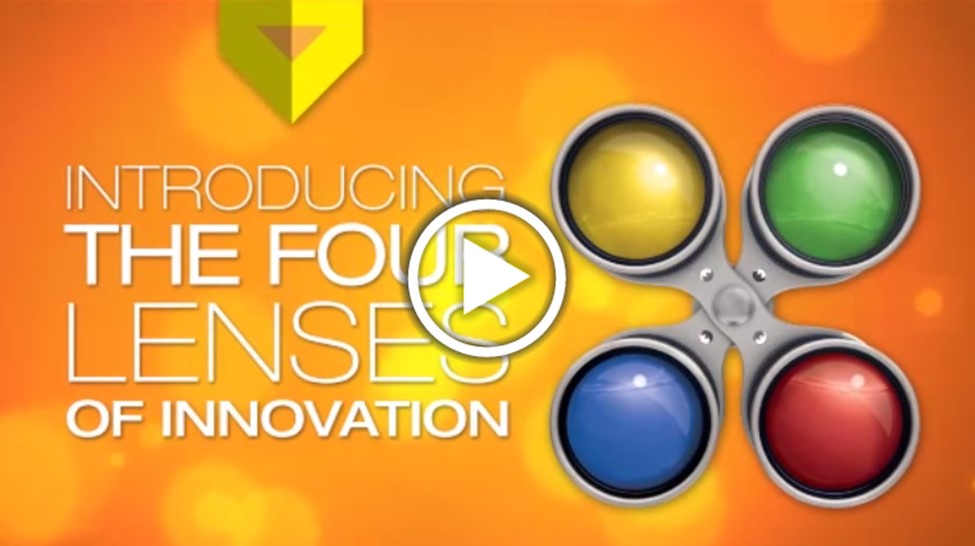What Kind of Stories Will You Tell?

Here's a story you can probably relate to.
You are walking down the street when a friend, coming the other way, stops, looks you in the eye, and asks "Whassup?" It's a question you've heard a thousand times before -- the default, open-ended salutation. Your choices are many. You can answer any way you want, from the predictable "Fine, whassup with you?" to an elaborate monologue on any number of topics: the weather, your vacation plans, the economy, the latest terrorist attack, local politics, your job, and the latest viral video.
In that moment, there is no correct answer. You get to decide what story to tell. What you don't get to decide is the impact your story will have. That's up to the listener. But know this: your story will have impact. Everything you say, everything you do has impact, even a seemingly casual moment of passing a friend on the street.
If you watch TV, you can see this phenomenon playing out daily. With an almost infinite number of topics to report on, the news TV reports on is mostly bad news: war, violence, political unrest, terrorism, famine, corruption, plane crashes, murder, scandal, disease, gossip, and unemployment with an occasional human interest story thrown in for good measure.
68% of Americans believe that TV news broadcasts focus way too much on bad news and yet we keep tuning in. The impact? Our state of well-being declines. We become sadder, more negative, more hopeless and depressed, exacerbating whatever personal worries and anxieties we already had before tuning in.
I'm not suggesting that news outlets airbrush the negative out of their reports. Nor am I suggesting they stop reporting on the bad stuff that's happening around the world. What I'm suggesting is that they find more of a middle path and make more of an effort to change the narrative to honor what's good and holy about being alive.

You and I are also news stations. You and I are also reporting on what's going on in the world. Like the TV executives behind the scenes, we also get to decide what stories to tell -- even on the street when a friend asks us "Whassup?" That is our moment of truth. That is our broadcast.
Will our stories be local versions of the nightly news, skewed to what's bad and wrong, full of gossip and complaint, or will we choose to tell a new story, one infused with possibility, progress, insight, awareness, and hope?
Excerpted from this book
The Story Workshop
The MotherShip
Posted by Mitch Ditkoff at 08:35 PM | Comments (0)
May 08, 2015Why Create a Culture of Storytelling?

Unless you've been living in solitary confinement for the past few years, chances are good that you are a member of some kind of organization or community -- a gathering of people who have come together in service to a common goal. Whether it's a Fortune 500 company, non-profit, or softball team, we are all, whether we know it or not, involved in the process of creating organizational culture -- "a collective way of thinking, believing, behaving, and working."
How conducive the cultures we create are to the success of our missions is anyone's guess, but what is not a guess is the fact that high performing organizations exhibit the same kind of mission-enabling qualities: trust, shared vision, collaboration, clear communication, diversity of thought, commitment to learning, freedom of expression, and a sense of belonging.
While there are many ways to enhance these qualities, the most effective and least expensive way is storytelling -- a culture-building phenomenon that's been going on since language first began. Simply put, in order for a group of people to accomplish extraordinary goals, they need to know each other at a level far beyond title, role, or resume.

When people tell their stories to each other and are heard, magic happens. Barriers dissolve. Connections are made. Trust increases. People bond. Knowledge is transmitted. Wisdom is shared. A common language is birthed. And a deep sense of interdependency is felt. That's why, in days of old, our ancestors stood around the fire and shared their stories with each other. Survival depended on it and so did the emotional well-being of the tribe.
Times have changed since then, as have our methods of communication.
Where once story reigned supreme, now it's technology and all his attention deficit offspring: texting, Twitter, Instagram, email, Facebook, post-its, and drive-by pep talks.
What we've gained in efficiency, we've lost in effectiveness. The spirit of the law has been replaced by the letter. People may be transmitting more, but receiving less. Data, information, and opinions are shared, but not much meaning. And it is meaning that people hunger for. It doesn't take a rocket scientist to figure out why employee engagement is down in so many organizations these days. It's because so many people are feeling isolated, disconnected, unseen, and unheard.
If you are part of an organization, no matter what it's shape or size, it's time for some meaning making -- and that meaning making begins by creating engaging opportunities for everyone, from mail room to board room, to share their stories with each other.
What story will you tell first? And when?
Excerpted from STORYTELLING AT WORK, to be published in the Fall.
Idea Champions
Posted by Mitch Ditkoff at 05:04 PM | Comments (0)
May 04, 2015Three Audacious Creativity Quotes to Awaken Your Inner Mojo



Idea Champions
Innovation Through Storytelling
Innovation Keynotes
Posted by Mitch Ditkoff at 01:42 AM | Comments (0)
May 01, 2015The Four Lenses of Innovation
The Heart of Innovation is happy to present the following guest post from Rowan Gibson, author of the recently published The Four Lenses of Innovation. Enjoy!

Ever wondered where big, breakthrough ideas come from? How do innovators manage to spot the opportunities for industry revolution that everyone else seems to miss?
Contrary to popular belief, innovation is not some mystical art that's forbidden to mere mortals. It can be just as systematic and methodical as anything else we do in business. And the great news is that we can all achieve it.
In my brand new book "The Four Lenses of Innovation: A Power Tool For Creative Thinking," I debunk the pervasive myths that are holding us back in our ability to innovate. By asking how the world's top innovators -- like Steve Jobs, Jeff Bezos, Richard Branson, and Elon Musk -- came up with their game-changing ideas, I have identified four key business perspectives or "lenses" that will enable you to discover groundbreaking opportunities for innovation and growth:

Challenge Your Orthodoxies
Remember, innovators are usually contrarians by nature. They are people who tend to question common assumptions and overturn conventional wisdom inside a company, or across a whole industry. Recall how James Dyson fundamentally reinvented the vacuum cleaner by asking why it needed a bag, and why it couldn't be a sexy design statement instead of the ugliest thing in your home. Or how Tesla's Elon Musk reconceived the electric car by asking why it couldn't be a sleek, high-performance automobile, and why it couldn't be sold exclusively online.
So what if you challenged your own, deeply-held beliefs about the "right" way of doing things? What if you sat down with your team and began to seriously and systematically challenge your deep-seated assumptions about your customers, your offerings, your route to market, your current profit-engines, and your differentiation strategy? What new innovation opportunities might present themselves? How might your business model be radically restructured to bring compelling new benefits to your customers?
Harness Emerging Trends
Innovators are trend-riders. While many companies either underestimate or ignore critical trends and discontinuities until it's too late to exploit them, innovators know how to use the power of change to their own advantage. They pay close attention to nascent developments that have the potential to profoundly impact the future of an industry, or that could be harnessed to substantially alter the rules of the game.

Consider Jeff Bezos, who saw the oncoming tsunami of e-commerce back in 1994, and rode that giant wave to great success with Amazon.com. Or John Mackey, founder and co-CEO of Whole Foods Market, who caught the health food wave back in the 1970s and harnessed that emerging trend to build his organic retail empire.
Ask yourself: which wave is our company riding? In what fundamental ways will our industry change in the future? Will we be ready for these changes? Will we be driving them? How can we harness these trends to gain a strategic advantage over our competitors? Are we going to ride the next tsunami in this industry, or will we will be washed away by it?'
Leverage Your Resources
Innovators never mentally pigeonhole a company in a particular market sector, or lock it up in a certain product or service category. Rather, they are able to stretch the way they define their business based on its collection of core competencies and strategic assets. Innovators believe that these embedded resources can always be repurposed, redeployed, or recombined to generate new growth opportunities, either adjacent to their current business or far beyond it.
As an example, take Richard Branson, who took Virgin's unique set of skills and assets and leveraged them into a global conglomerate comprising more than 400 different companies in a multitude of diverse market sectors. Or Larry Page and Sergey Brin, who have refused to develop a narrow self-image of Google, choosing instead to expand not just the concept of search but also of Google itself, by stretching into productivity tools, operating systems, hardware, self-driving cars, robotics, and even life extension technologies.

The lesson for us is that we need to think of a company not in terms of what it is or what it does, but in terms of what it knows -- its skills and unique capabilities -- and what it ownsm such as infrastructure, proprietary technologies, standards, patents, brands, customer data, and so on. What if you redeployed these core competencies and strategic assets in completely new ways, or in new contexts, to open up exciting new growth opportunities for your business?
Identify Unmet Needs
Innovators are empathizers. They know how to "get into the customer's skin." They are able look at things from the customer's perspective, and to intuitively sense -- to feel -- the customer's "pain points". They have a knack for identifying and understanding unmet and perhaps unarticulated needs. And they set out to address these needs by designing innovative solutions from the customer backward.
Did anyone tell Steve Jobs they needed a translucent desktop computer, a cool MP3 player, an online music store, a revolutionary smartphone, an App Store, or a tablet computer? Nope. He somehow knew what we needed before we did. Did anyone ask Tony Fadell and Matt Rogers for a smart, friendly thermostat that could learn and adapt to our behaviors? Nope. The founders of Nest Labs simply set out to identify common human frustrations and then to solve them with intelligent, cool appliances.

How much do you really know about your customers'unsolved problems, unmet needs, and wants? How deep are you digging in your search for important customer insights? And are you using these insights as the essential basis for imagining new offerings, new marketing strategies, new customer experiences, and new business models? Or is there a disconnect somewhere between your customers' real needs and the ideas and offerings you produce?
The great news is that literally anyone can use these four proven perspectives to unlock their ability to innovate. They represent powerful innovation lenses that enable us to look at the world from completely new angles of view, revealing surprising insights and opportunities that we never saw before -- ideas that were, if you like, "hidden in plain sight." Most importantly, they offer us a "power tool for creative thinking", a way to dramatically enhance our own innate capacity for creativity and imaginative problem-solving by emulating the mind of the innovator.
My new book will help you in your hunt for the next big idea that will shape the destiny of your company. Other books promise the keys to innovation. This one delivers them. With a unique full-color design, 304 pages of thought-provoking examples, and features like my 8-Step Model for Building a Breakthrough, "The Four Lenses of Innovation: A Power Tool For Creative Thinking" will teach you how to reverse-engineer creative genius and make radical business innovation an everyday reality inside your organization.
Image Credits: All images are the copyrighted property of Rowan Gibson and used here with permission. All rights reserved.
Rowan Gibson is recognized as one of the world's foremost thought leaders on innovation. His new book, The Four lenses of Innovation (Wiley), examines the thinking patterns or perspectives that have been catalysts for breakthrough innovation throughout human history, and shows you how to use these perspectives to infuse creativity into your own organization.
Posted by Mitch Ditkoff at 01:48 PM | Comments (0)
The Professor and the Jar
A college professor stood before his philosophy class at the start of a new semester. Silently, he picked up a very large jar and filled it with golf balls. Then he asked the students if the jar was full. They agreed that it was.
The professor then picked up a box of pebbles and poured them into the jar. He shook the jar lightly, pebbles settling into the open areas between the golf balls. He then asked the students again if the jar was full.
They agreed that it was.
The professor next picked up a box of sand and poured it into the jar. He asked once more if the jar was full. The students again responded with a resounding "yes."
The professor then produced two cups of tea from under the table and poured them into the jar, filling the empty spaces between the sand. The students laughed.
"Now," said the professor. "I want you to understand that this jar represents your life. The golf balls are the important things -- your family, health, friends, and feeling of well-being. If everything else was lost and only they remained, your life would still be full."
"The pebbles are the other things that matter -- your job, your house, your accomplishments etc. The sand is everything else -- the small stuff."
"If you put the sand into the jar first," he continued, "there's no room left for the golf balls or pebbles. The same holds true for life. If you spend all your time and energy on the small stuff, you'll never have room for the things that are really important to you."
"Pay attention to the things that are essential to your happiness. Spend time with your children. Spend time with your parents. Take your spouse out to dinner. Smell the flowers. Enjoy the beauty of existence. There will always be time to clean the house and fix the disposal. Take care of the golf balls first -- the things that really matter. The rest is just sand."
One of the students then raised her hand and asked what the two cups of tea were about
The professor smiled, "I'm glad you asked."
"The tea shows you that, no matter how full your life may seem, there's always room for tea with a friend."
This story is not in my forthcoming book, but 36 others are.
Idea Champions
Posted by Mitch Ditkoff at 09:36 AM | Comments (1)














